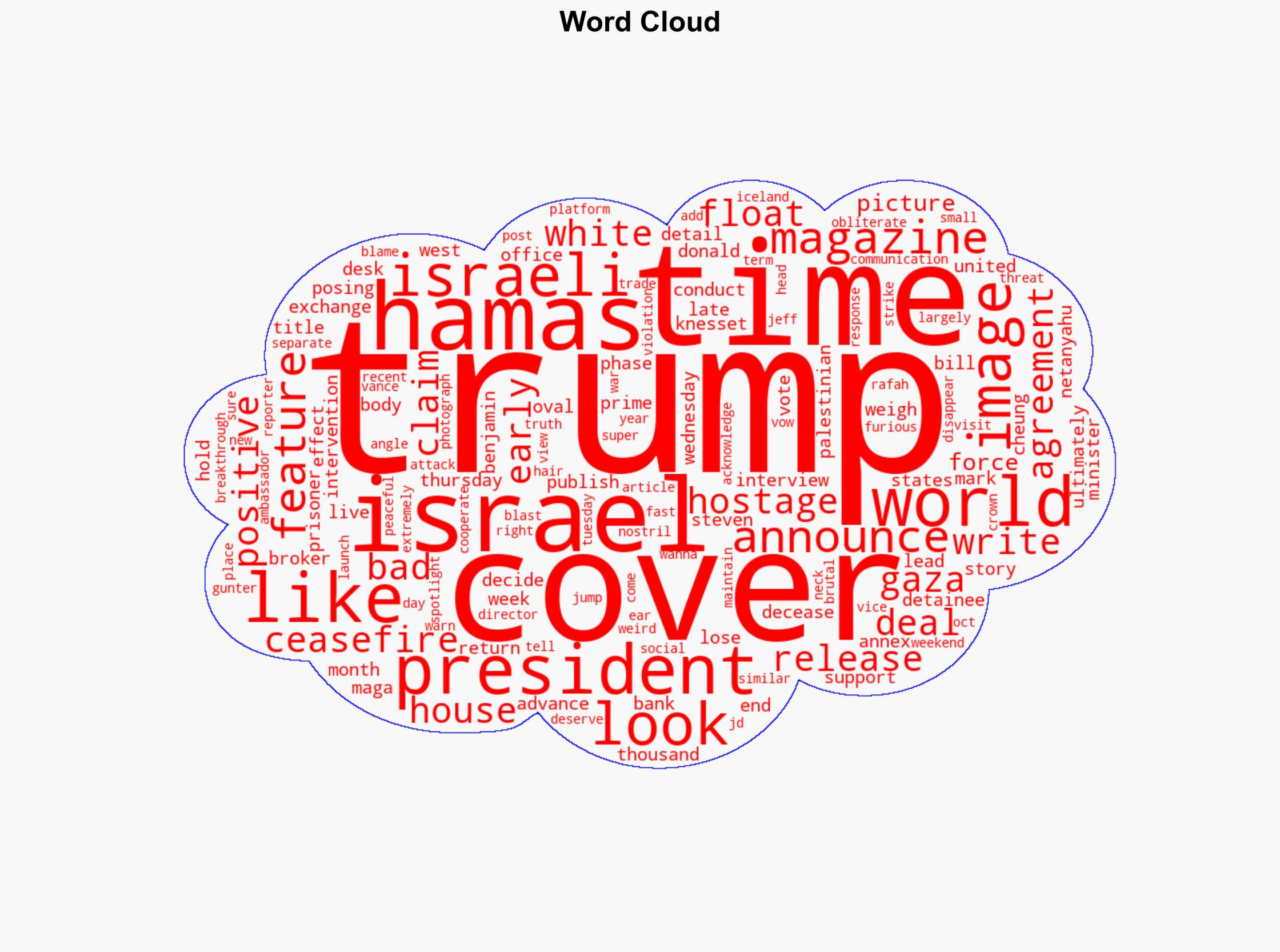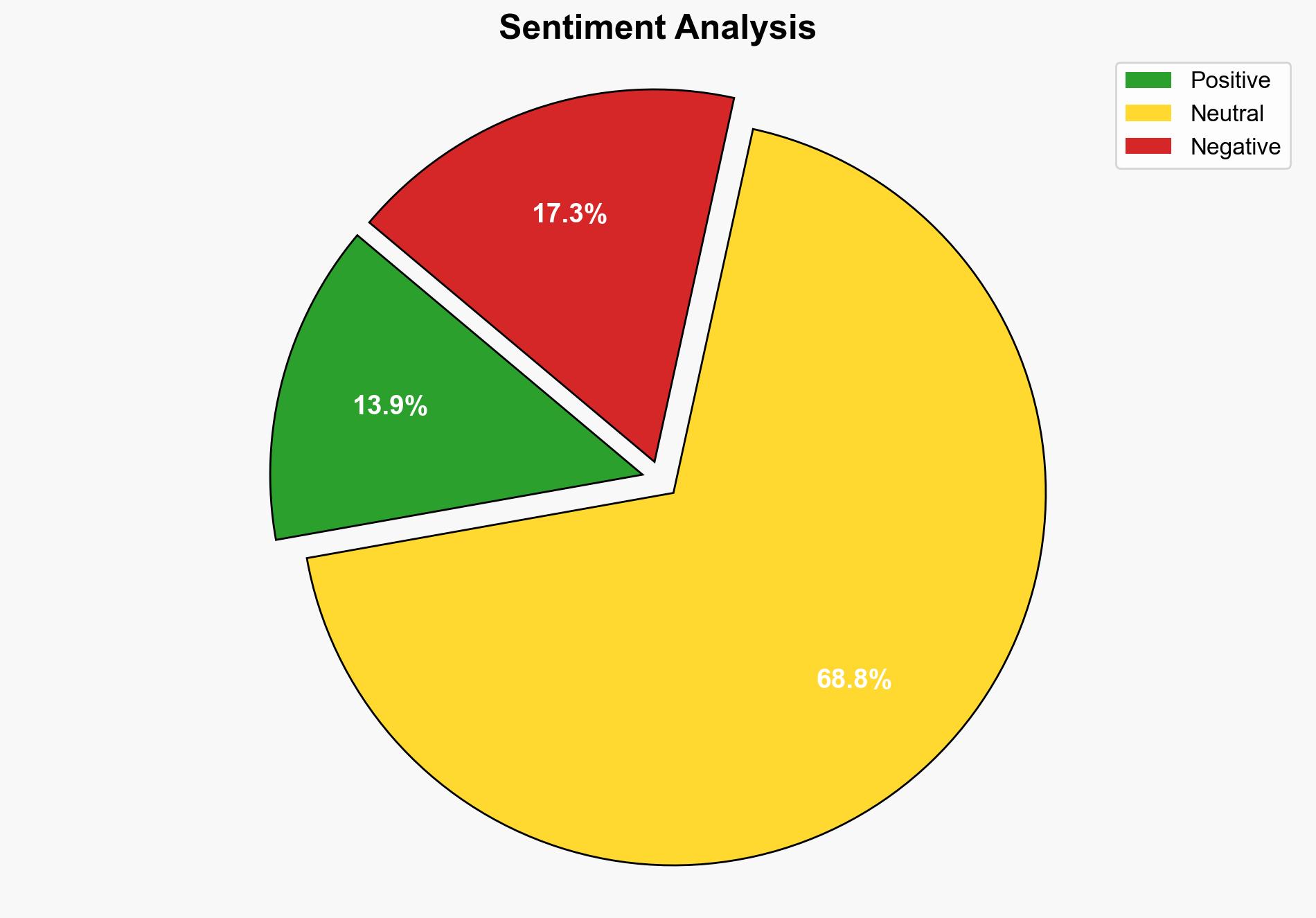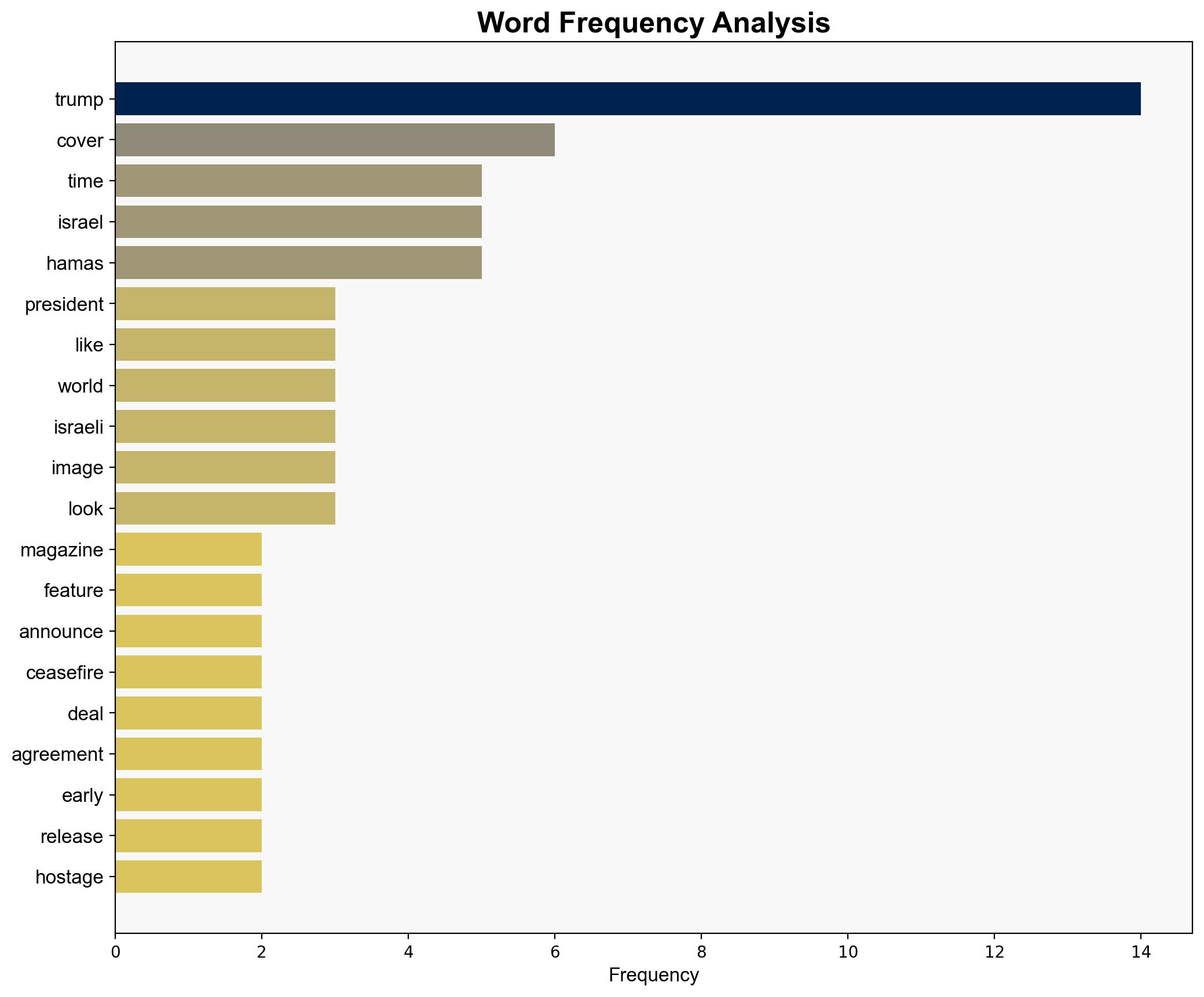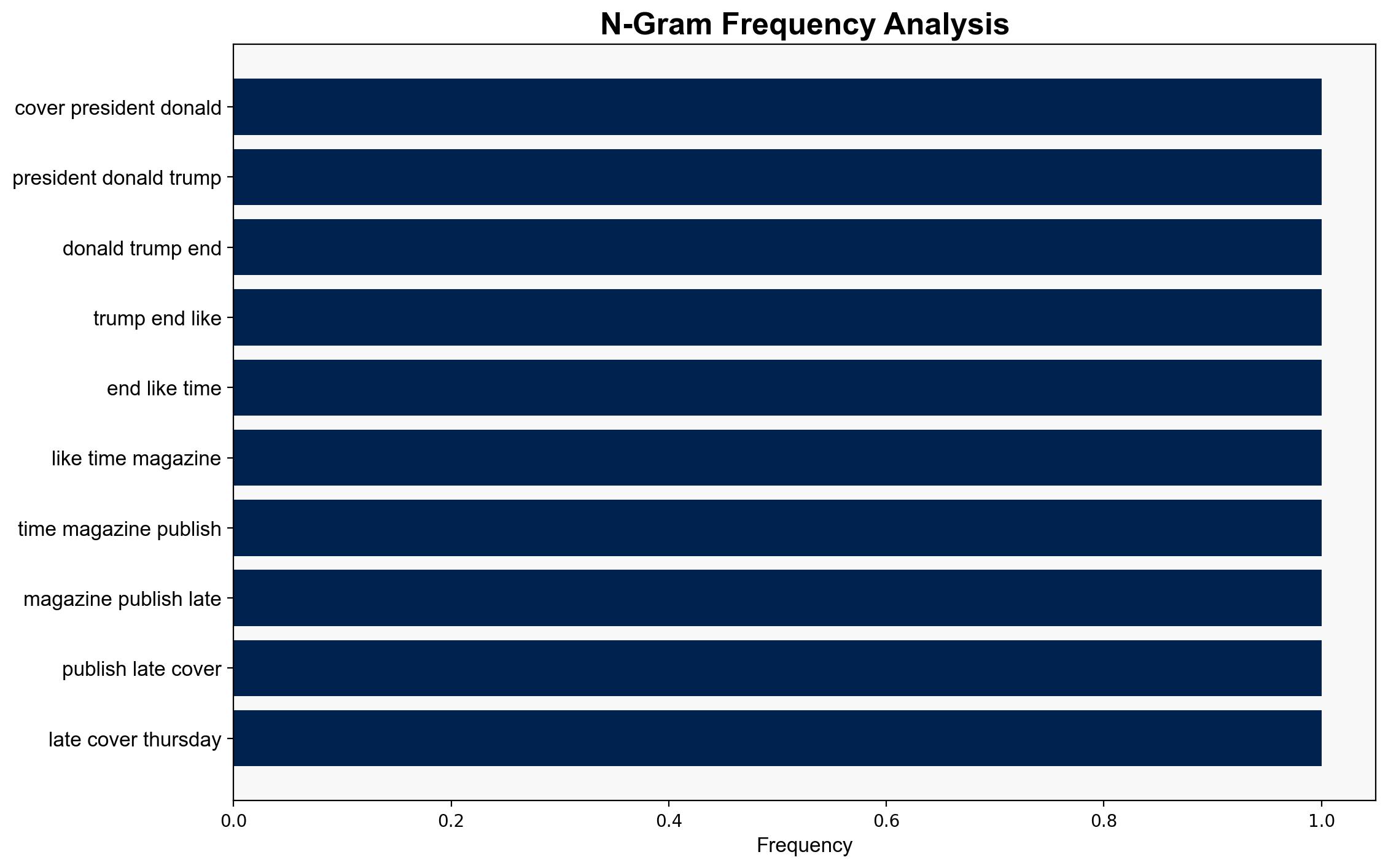Worst of All Time Trump featured in new Time magazine cover hes sure to love – nj.com
Published on: 2025-10-23
Intelligence Report: Worst of All Time Trump featured in new Time magazine cover hes sure to love – nj.com
1. BLUF (Bottom Line Up Front)
The analysis suggests that the Time magazine cover featuring Donald Trump is part of a broader media narrative that could influence public perception of his role in Middle Eastern diplomacy. The most supported hypothesis is that the cover aims to highlight Trump’s diplomatic achievements, despite the contentious imagery. Confidence level: Moderate. Recommended action: Monitor media narratives and public reactions to assess potential impacts on U.S. foreign policy and domestic political dynamics.
2. Competing Hypotheses
1. **Hypothesis A**: The Time magazine cover is intended to positively frame Trump’s role in brokering a ceasefire between Israel and Hamas, emphasizing his diplomatic achievements.
2. **Hypothesis B**: The cover is a satirical critique, using provocative imagery to question the effectiveness and motivations behind Trump’s diplomatic efforts.
Using the Analysis of Competing Hypotheses (ACH) 2.0, Hypothesis A is better supported by the context of the article, which mentions a ceasefire deal and positive acknowledgment by Trump himself. However, the critical tone regarding the cover image suggests elements of Hypothesis B.
3. Key Assumptions and Red Flags
– **Assumptions**: The analysis assumes that media portrayals directly influence public perception and policy outcomes. It also assumes that the ceasefire deal is a significant diplomatic achievement.
– **Red Flags**: The article’s tone and Trump’s reaction to the cover image suggest potential bias or satire. The lack of detailed context on the ceasefire’s effectiveness raises questions about its portrayal as a success.
4. Implications and Strategic Risks
The portrayal of Trump’s diplomatic efforts could impact U.S. relations with Israel and Palestine, influencing future negotiations. Media narratives may affect Trump’s political capital domestically, potentially impacting the 2024 election landscape. The ceasefire’s fragility poses risks of renewed conflict, with implications for regional stability and U.S. involvement.
5. Recommendations and Outlook
- Monitor media coverage and public opinion to gauge the narrative’s impact on Trump’s political standing and foreign policy influence.
- Engage in diplomatic dialogues to reinforce the ceasefire and address underlying tensions in the Israel-Palestine conflict.
- Scenario Projections:
- Best: The ceasefire holds, leading to long-term peace negotiations.
- Worst: The ceasefire collapses, escalating into broader conflict.
- Most Likely: Periodic violations occur, but diplomatic efforts maintain a fragile peace.
6. Key Individuals and Entities
– Donald Trump
– Benjamin Netanyahu
– Steven Cheung
– Jeff Gunter
– JD Vance
7. Thematic Tags
national security threats, media influence, Middle East diplomacy, U.S. foreign policy





